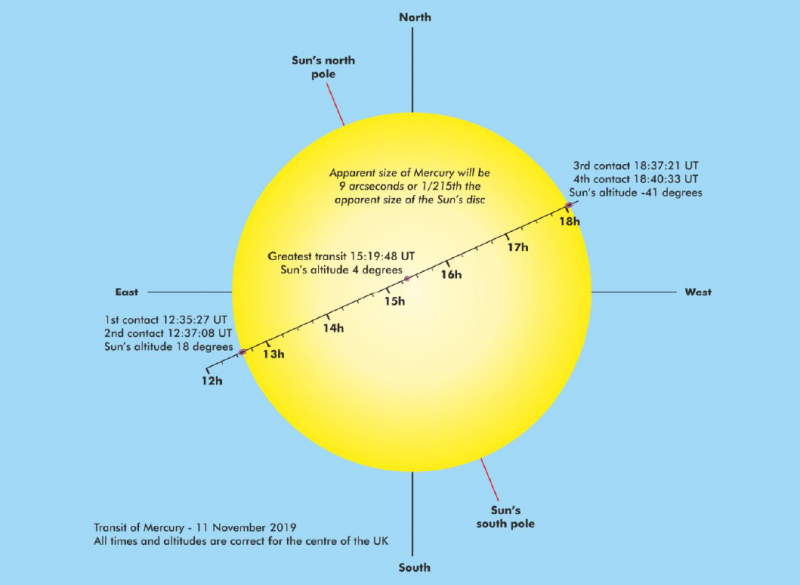2019 November 1
Observing the transit of Mercury

On 2019 November 11 the planet Mercury will pass in front of the sun as viewed from Earth. This event won’t be observable without dedicated solar filters and an optical aid.
BE VERY CAREFUL WHEN OBSERVING THE SUN! Never observe the Sun directly without a certified filter. A guide on observing the Sun by the Solar Section Director, Lyn Smith, is an excellent resource to read over if you are new to observing the Sun, and an excellent tutorial on this transit has also recently been published on the website.
The chart below gives the start and end time of the transit along with Mercury’s path across the Sun.

If you have a refractor under 150mm aperture you can project the Sun and observe the transit in white light. Alternatively certified solar film can be used to make any telescope safe for solar viewing by covering the entire front aperture – remember to cap or remove the finder! Another method is to observe or image the event with a dedicated hydrogen-alpha telescope.
UK observers will be able to observe the start of the transit but the Sun will set before the transit concludes.
Just before the start of the transit, Mercury will pass against the spicule layer of the Sun. The spicule layer is a cross-section through the chromosphere as seen at the edge of the Sun using a hydrogen alpha filter. It is not visible in white light, only H-alpha, so you will need a dedicated solar telescope for this challenge.
In H-alpha, Mercury will appear as a black silhouette against the spicule layer (see image below). It’s best to start observing from around 1215 UT- make sure you know which side is east and west in your telescope! If you get the wrong side, you will miss the event and remember the sun sets from the UK by the time the transit ends.

Please do post any observations you make to your BAA Member Page and report any observations to the BAA Mercury and Venus Section
Paul G. Abel & Pete Lawrence
[Thumbnail image by James Dawson]
| The British Astronomical Association supports amateur astronomers around the UK and the rest of the world. Find out more about the BAA or join us. |
